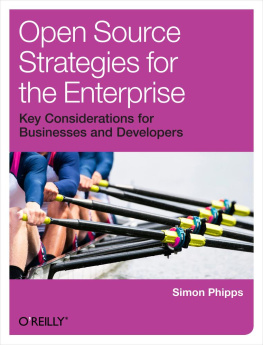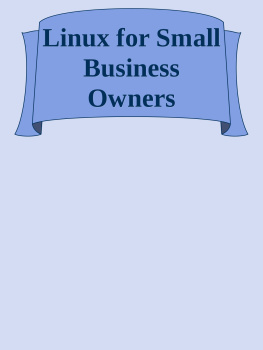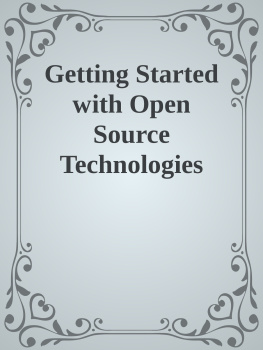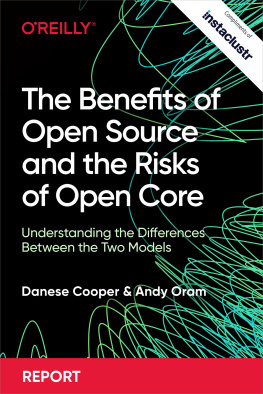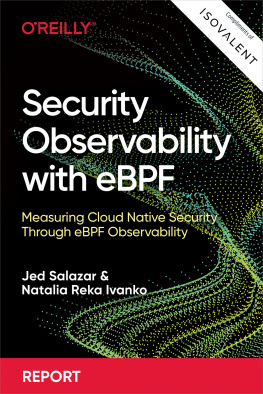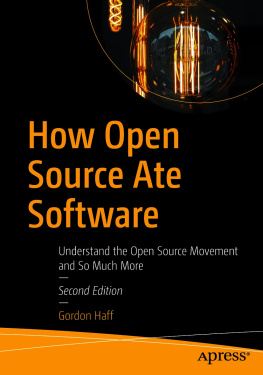The Open Schoolhouse
Building a Technology Program to
Transform Learning and Empower Students
Charlie Reisinger
@charlie3
The Open Schoolhouse
Building a Technology Program to Transform Learning and Empower Students
http://theopenschoolhouse.com/
@OpenSchoolhouse
Copyright 2016 Charlie Reisinger
This work is licensed under a Creative Commons
Attribution-NonCommercial-ShareAlike 4.0 International License.
Cover Design by Zach LeBar
First Printing October 2016
Contents
Chapter One
A Brief Open Source Lesson
Code is the heart of modern gadgets. Without a programmers carefully planned playbook of instructions, our computers, phones, cars, and pacemakers are nothing more than inert rectangles of plastic, metal, and glass. Its nearly impossible to purchase an electronic device that isnt controlled by software. Marc Andreessen, technology entrepreneur and co-founder of Netscape, offers a lucid observation, Software is eating the world. With so much power concentrated in code, we ought to understand how software is made, controlled, and distributed. Lets discuss closed source software before we turn our attention to open source software concepts and principles.
Writing software is similar to movie production. To create the Star Wars films, Lucas and his team generated outlines, drafted and revised scripts, built sets, and filmed scenes. Next, editors and directors brought together footage and sound, cut errors, and sequenced the narrative to create a finished movie. The film was then packaged into a DVD or digital file for us to watch on the big screen or our little home laptop screen.
Software programs and apps are like a finished movie. A programmers source codethe complete sequence of instructions, scripts, and commands required to make the software do your biddingis compiled into a playable file which springs to life when you click or tap it. Like a movie on DVD, the completed software package is all we ever see. The cryptic bits of source code are boxed up inside the program.
Software can be classified as either closed source or open source. Adobe Photoshop is closed source; we receive the playable program only. The underlying computer code to rotate your family vacation photos, or touch up bad lighting on your cats first birthday, is never visible to us. Adobe keeps Photoshops source code under lock and key.
Many closed source, proprietary commercial programs are familiar household names: Microsoft Windows and Office, Apples iOS and the MacOS operating system, Adobes Creative Suite products, and business software like QuickBooks are common examples. In each case, the company holds the copyright and the code. Consumers cant examine, study, or copy the programming inside Windows or Photoshop. Like Lucas unedited film footage, Windows and Photoshop source code is hidden from public view.
As you might expect, closed source software licensing protects business interests. When we purchase Photoshop, we receive a right to use software license. We dont get the code and we cant alter the software. Without source code blueprints, and the permission to study or improve the software, we become renters of commercial programming property and must live by the landlords rules.
Closed source software is often tightly ingrained in a devices identity. Apples iPhone and iPad behave the way they do thanks to the companys closed source iOS operating system. Apple iOS is the software brain behind the phones behaviors and buttons. Consumers do not directly pay for iOS software, yet it is indivisible from Apple devices. You cant buy an iPad or iPhone without iOS. And without iOS, an iPhone would be as useful as a tin-can phone. Furthermore, Apple prohibitsand actively discouragescustomers from installing any other operating system on their iPhone or iPad. The software is closed, the hardware is closed, and Apples trade secrets stay inside their corporate black box.
Closed Source Software
Closed source, proprietary software licenses grant several commercial powers. The first is pricing power. Lets say you recently launched a new lemonade stand and need special accounting software to run your business. If I am selling lemonade stand software, you might buy it. And if I am the only shop selling that kind of software, I can charge whatever you are willing to pay for a software license. Youll probably want to keep the software current, so Ill charge you for future version upgrades as well. And since you are a licensee of the softwareand cant rewire the software yourselfyou are at my mercy.
Dependency is the second power of closed source commercial software. Perhaps you unearth an amazing secret ingredient for a perfect lemonade mix. Congratulations! Your stand grows and sales boom. Meanwhile, you have come to rely on my software and continuously add critical sales data into the system. Other lemonade accounting software programs may have appeared on the market, but eventually you reach a tipping point where the costand practicalityof switching to different software becomes unbearable. You have created lemonade so irresistible that your customers cant say no, and I have created lemonade software so essential to your business that you cant walk away. Just as you have the secret recipe for sublime lemonade, I have my secret software code locked away from your control.
Software dependency is common in schools. When commercial programs like Microsoft Office, as well as proprietary document file formats, become entrenched and institutionalized into school curriculum, converting to alternatives becomes progressively more difficult and often unpopular.
The third power of closed source software is control. On a basic level, control means customers and educators are beholden to a world created by programmers. If I wrote your lemonade inventory software, you have no control over the sequence of buttons or screens that you use to produce your lemon supply report. My programming decisions define how you use my software. You may want, or need, additional reports and features, but I hold the classified code. Your wishes are granted by my programming wand and good will alone. You are now at the mercy of my software design. Good thing my intentions are pure, and Im not a diabolical programmer, right?
But what if I were Evil Charlie, the dastardly lemonade software tyrant? If you cant read or review my code, how do you know what my program is doing below the surface of your screen? Could you detect that Ive implanted a little spying bot that quietly watches your supply ordering activity and covertly grabs the ingredients for your secret lemonade recipe? Would you discover the hidden log tracking your sugar orders? I bet your sales information would be of great interest to your sugar vendorsor your competitors. Lucky for your lemonade empire, Im not feeling evil. At least not at the moment.
Software Subscription Squeeze
Lets move on from the lemonade example and consider a commercial software purchasing model with a sour twist: pay-for-use software subscriptions. Think of a software subscription like a subscription to the New York Times. As long as we pay the monthly bill, we receive the latest paper on our doorstep.
With a traditional New York Times service subscription, we can archive previous issues as long as we would likeor as long as we have enough space in our basement. In contrast, software service subscriptions compel customers to immediately stop using the product if the subscription lapses. If we stop sending checks, the newspaper stops showing up at our doorstep.
Commercial software subscriptions create bitter problems for school budgets. One example is Adobe Creative Cloudthe software bundle that includes Photoshop, InDesign, and other creative program. Prior to 2014, schools could make a one-time purchase of a perpetual Photoshop license, and use the boxed version as long as it ran on school computers. Since Photoshop updates typically do not include features essential to classrooms, schools saved money by skipping versions and upgrading only when absolutely necessary, or when budgets allowed. Over the course of a decade, Penn Manor School District saved tens of thousands of dollars by skipping every other, or every third, paid Photoshop version upgrade.
Next page

